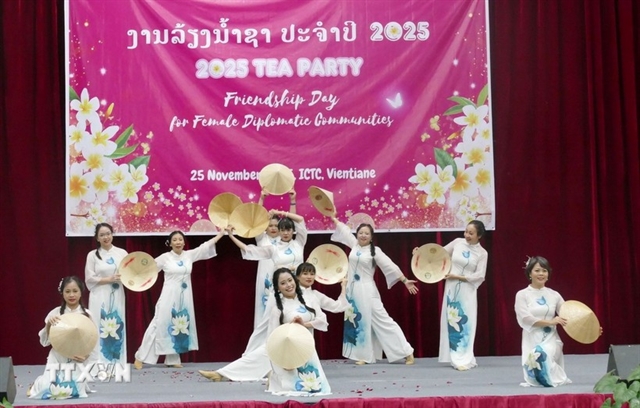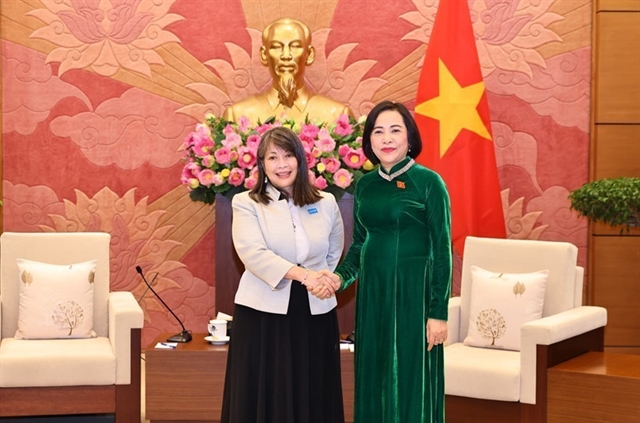 Life & Style
Life & Style

An exhibition featuring the Vietnamese people’s revolutionary war against French invaders in 1946 to gain independence for the then young Democratic Republic of Việt Nam has opened at the National Museum of Vietnamese History in downtown Hà Nội.
HÀ NỘI — An exhibition featuring the Vietnamese people’s revolutionary war against French invaders in 1946 to gain independence for the then young Democratic Republic of Việt Nam has opened at the National Museum of Vietnamese History in downtown Hà Nội.
The event, titled ‘Việt Bắc – the Capital of Forest Wind’, aims to celebrate the National Revolutionary Day on December 19, 1946, when President Hồ Chí Minh launched his call for all people to join in the war against French colonists.
Responding to his call, people stepped into a long-term war between 1946 and 1954 with the spirit “losing everything but not losing the sovereignty or being slaves”.
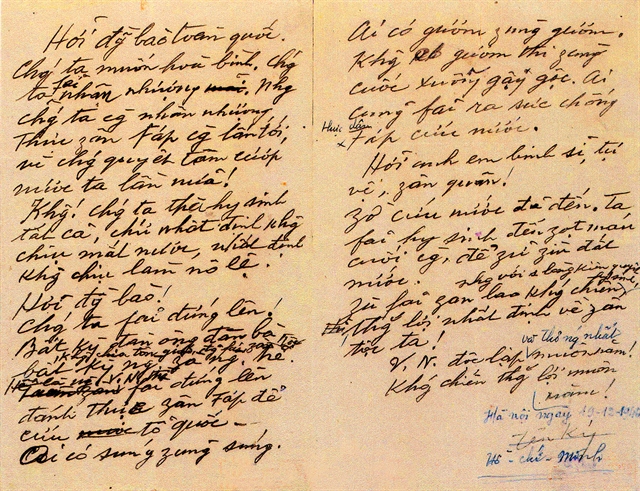
|
| Handwritten draft of President Hồ's call for a national revolution signed on December 19, 1946. — Courtesy Photo of the museum |
Over nine years, Việt Bắc Revolutionary Base in the northern province of Thái Nguyên, which was known as the Safe Zone or Windy Capital, hosted President Hồ and his comrades to stay and lead the revolution.
Some 200 images, documents and objects are on display at the exhibition showcasing three remarkable topics.
The first topic at the exhibition is Sacrifice for the Nation – Hà Nội Joins the National Revolution.
"The exhibits include the President’s first handwritten draft of the historic call, which has been recognised as a national treasure," Nguyễn Thị Thu Hoan, deputy director of the museum, told Việt Nam News.
In the two pages, besides the President’s letters in brown ink, there remains also blue-inked correction marks by Trường Chinh, the then General Secretary of Indochina Communist Party, she said.
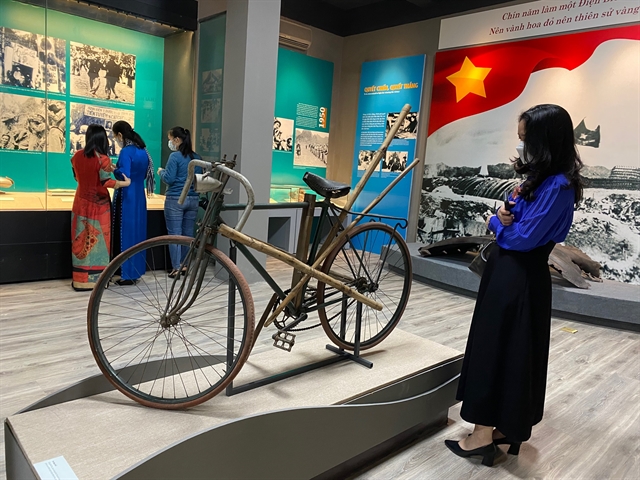
|
| A visitor looks at a bicycle used by Bùi Tín from the central province of Thanh Hóa to transfer food and weapons to the Vietnamese army during the Điện Biên Phủ Campaign in 1954. — VNS Photo Lê Hương |
The document was first broadcast on the Radio Voice of Việt Nam, which was based at Trầm Pagoda in Chương Mỹ, the western outskirts of today’s Hà Nội and on the front page of Cứu Quốc (Saving Nation) newspaper, the communications agency of Việt Minh Front. The message was also printed on leaflets to distribute throughout the nation.
Many images and replicas recall the brave fighting of residents in the capital Hà Nội from the night of December 19, 1946. The fighting during 60 ‘sleepless’ days and nights sparked the war against the invaders in the country with various brave examples.
The second part at the exhibition features historic days at Việt Bắc Revolutionary Base. With advantages in geography including thick forests and steep mountains, which were used as a shelter from the enemy, Việt Bắc was chosen to host the revolution’s leaders after they left Tân Trào Revolutionary Base in the northern province of Tuyên Quang when the August Revolution in 1945 succeeded.
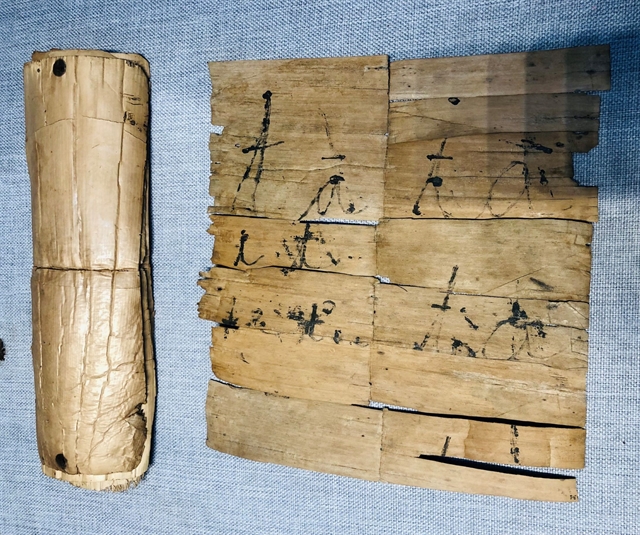
|
| A notebook made from bamboo of pupils at Hàn Thuyên Primary School in Bắc Ninh Province during the revolutionary period against the French between 1946-1954. — VNS Photo Lê Hương |
The Revolutionary Base hosted various important events, playing a decisive role in the final victory of the revolution. At the base, President Hồ, the Central Party and Government gathered and led Việt Bắc Fighting in Autumn-Winter of 1947; the Northern Border Victory in 1950; the second National Party Congress in Chiêm Hóa, Tuyên Quang; victories in Winter-Spring of 1953-1954 with the Điện Biên Phủ Victory on May 7, 1954 as the peak.
The third part of the exhibition features the historic Điện Biên Phủ Campaign in May 1954.
An important part of the exhibition is the march to Hà Nội in victory on October 10, 1954.
The Việt Bắc Revolutionary Base complex has become one of the most important relic sites of the nation in the 20th century, which gathers 400 cultural and historical sites, 28 of which are national-level sites and 14 special relic sites. The area has been used for educating young people and tourists about the history of the nation. A documentary on the base is screened at the event.

|
| Deputy Director of the museum Nguyễn Thị Thu Hoan looks at a bronze statue of President Hồ by sculptor Nguyễn Thị Kim made in 1946. The statue, which features the President focusing on work, is displayed for the first time to the public. — VNS Photo Lê Hương |
“We just want to once more confirm the historical values of the base to the nation’s development,” said Nguyễn Văn Đoàn, director of the museum. “We want to remind people of the brave fight against the colonists to gain independence and enhance people’s belief in the guidelines of the Party, President Hồ and encourage people to unite at any time to overcome all challenges in the renewal process.”
The exhibition will run at the museum, 25 Tông Đản Street, till the end of May next year.
The show is also available at the museum’s website: baotanglichsu.vn and fanpage: facebook.com/BTLSQG.VNMH. — VNS

